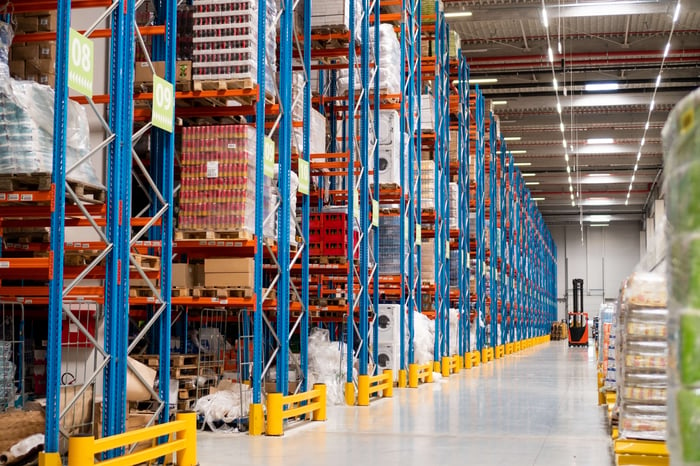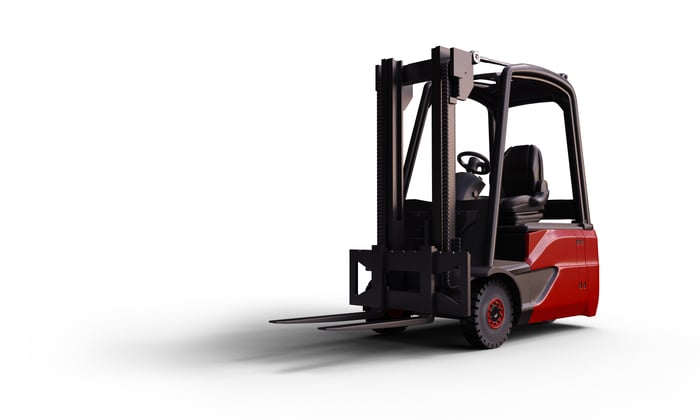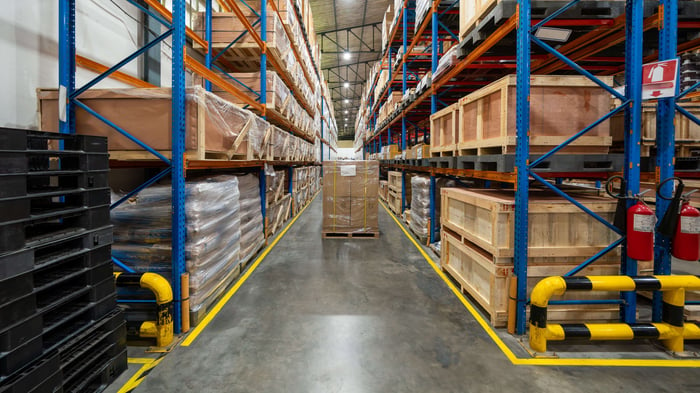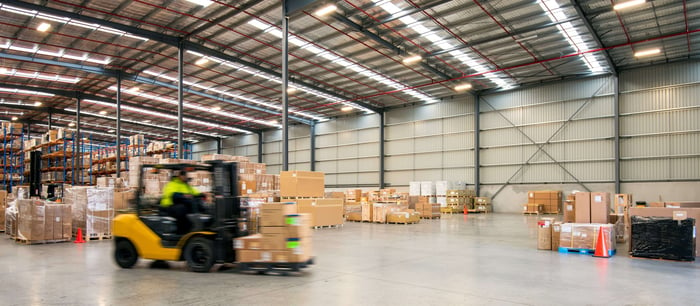If you own, manage, or help operate a warehouse facility, you understand that maximizing your pallet rack storage capacity is essential for efficiency and cost-effectiveness. What you might not know yet is that narrowing the aisles of your warehouse can increase your storage capabilities.
One of the most impactful factors in optimizing storage is the width of your warehouse aisles. So, if you want to upgrade your operational efficiency in the new year, this guide is for you. Here, you’ll learn how to narrow your warehouse’s aisles and use specialized lift trucks to increase overall capacity.
So, keep reading to learn how to calculate pallet rack storage capacity using a straightforward equation and explore how adjusting aisle dimensions can improve your warehouse’s efficiency.
Understanding Pallet Rack Storage Capacity
First things first—what exactly is pallet rack storage capacity? It refers to the total number of pallets your warehouse can hold based on its racking design, layout, and aisle configuration. There are a few factors that influence this capacity, including:
Warehouse Dimensions: Total available floor space.
Aisle Widths: Space allocated for lift truck maneuvering.
Pallet Rack Configuration: Options include single-deep, double-deep, and push-back racks.
Lift Truck Types: Equipment specifications determine minimum aisle widths.
The Impact of Aisle Widths
Few things in the world can be made narrower and function better, but aisles in a warehouse are one of them. The width of your aisles directly affects storage capacity and ability to access storage when necessary.
While wider aisles do offer easier navigation, they can reduce storage density. On the other hand, narrower aisles maximize storage but require specialized equipment. Not sure where your aisles fall in comparison to other warehouses? Here’s a quick look at the most common aisle width categories:
Wide Aisles (10-12 feet): Suitable for standard counterbalance trucks.
Narrow Aisles (8-10 feet): Ideal for reach trucks.
Very Narrow Aisles (6-8 feet): Require turret trucks or articulated forklifts.
The Impact of Truck Size & Types
The type of truck your warehouse operates with will also affect the width you can accommodate optimally. For instance, switching from a counterbalance truck to a VNA truck can increase storage capacity by 20-40%. When selecting the appropriate lift truck for your operation, it's essential to consider the equipment's physical dimensions and operational requirements.
While versatile, counterbalance trucks demand wider aisles due to their forward-facing operation and turning radius requirements. Their design includes a counterweight at the rear to balance the load in front, necessitating more space for maneuvering.
Reach trucks can operate in narrower aisles because their design allows the forks to extend forward while keeping the truck body stationary, reducing the space needed for load handling. Narrow aisle trucks and VNA trucks are specifically engineered for dense storage environments.
They feature specialized mast designs and guidance systems that allow for precise movement in confined spaces. However, these trucks often require wire guidance or rail systems installed on the floor, adding to the initial infrastructure cost but providing significant long-term benefits in storage density.
As a handy guide, here’s a list of the various lift truck types and their standard aisle requirements:
Counterbalance Trucks: 12-13 feet
Reach Trucks: 8-10 feet
Narrow Aisle Trucks: 6-8 feet
Very Narrow Aisle (VNA) Trucks: 5-6 fee
The Fundamental Pallet Rack Storage Capacity Equation
First, gather the following for your specific facility to determine your warehouse’s total pallet storage capacity.
PP = Total Pallet Positions
L = Warehouse Length (feet)
W = Warehouse Width (feet)
N = Number of Aisles
AW = Aisle Width (feet)
PD = Pallet Depth (feet)
PW = Pallet Width (feet)
UW = Upright Width (feet)
CW = Clearance Width from Walls (feet)
FL = Floor Level Positions
BL = Beam Levels
Then, plug in your numbers to calculate your warehouse's total pallet position capacity using this formula:
PP = [(L - (N × AW)) ÷ (PD + UW)] × [(W - (2 × CW)) ÷ (PW + UW)] × (FL + BL) × 2
(2 = Both Sides of Aisle)
Real-World Application: Example Equation
Of course, it always helps to see an equation example before calculating your own, to ensure you’re doing the match correctly. In this example equation, we’ll calculate the capacity for a 200' × 100' warehouse section:
Using Counterbalance Trucks:
Aisle width: 12'
6 aisles
Standard 40" × 48" pallets
6" upright width
2' wall clearance
5 beam levels + floor level
2 pallets per beam
PP = [(200 - (6 × 12)) ÷ (4 + 0.5)] × [(100 - (2 × 2)) ÷ (3.33 + 0.5)] × (1 + 5) × 2 = [128 ÷ 4.5] × [96 ÷ 3.83] × 6 × 2 = 28.4 × 25.1 × 6 × 2 = 8,561 pallet positions
Using VNA Trucks:
Reduce aisle width to 6'
All other variables are constant
PP = [(200 - (6 × 6)) ÷ (4 + 0.5)] × [(100 - (2 × 2)) ÷ (3.33 + 0.5)] × (1 + 5) × 2 = [164 ÷ 4.5] × [96 ÷ 3.83] × 6 × 2 = 36.4 × 25.1 × 6 × 2 = 10,973 pallet positions
In this example, switching to VNA trucks would increase the storage capacity for that individual warehouse by 28%.
The Final Word: Improving Pallet Rack Storage Capacity
As you can see here, making shifts in your warehouse’s layout can significantly impact your efficiency, cost-effectiveness, and overall ROI and bottom line. So, if you’re renovating or building out a warehouse for the first time, maximizing pallet rack storage capacity with the right-sized aisles and the right type of truck is crucial.
If your expertise is warehouse management (and likely not design!), it helps to partner with expert professionals to design your space optimally. Look no further than BMH, the leader in warehouse equipment, manufacturing, and engineering.
Our product lines span from pallet racks and shelving to conveyors, forklifts, and beyond. At the same time, enabling manufacturers, distributors, and logistics providers to get what they need where they need it most efficiently. Work with the best to achieve the best for your warehouse. Contact our team or begin exploring our equipment now.




